September 20, 2019
From September 20, 2019:
Status: Currently escaping from Colditz Castle. Will let you know how it goes.
If you’ve ever played and enjoyed “Castle Wolfenstein”, this post is for you.

During WW2, Colditz Castle, about an hour southeast of Leipzig, served a top-security prison for Allied POWs, most of them officers.

The Allied prisoners sent to Colditz were ones who had already been caught trying escape from normal POW camps.

At Colditz, they faced far tighter security. But it also threw together the most talented and motivated escape artists in the war, creating a “school for escape” of prisoners who would try just about anything to get out.

The first prisoner to escape, a French officer, ducked into the blue door in the pink building, while on work detail outside the castle. He then made his way to Switzerland by hopping trains across Germany.

Others tried to dig their way out. The French started their tunnel way up at the top of the clock tower (which had been sealed up).

Their goal was to get into what they assumed was a crypt under the castle’s chapel, and then dig their way out from there.

They got down to the wine cellar under the clock tower and started digging this tunnel under the chapel.

But they didn’t find a crypt. Instead, they had to dig their way back up again until they reached a tiny crawl space under the chapel floor.

To cross that crawl space, the French had to saw through a series of thick wooden beams supporting the floorboards, one by one.

Here are some of the original saws and other tools they made by hand to cut through the wooden beams.

Once they got to the other side of the chapel, they dug a deep tunnel down to get below the outer stone wall.

After several months of digging, the French were nearly out when the Germans discovered their tunnel and shut down the escape. Many people escaped from Colditz, but not one from digging a tunnel, though many attempts were made.
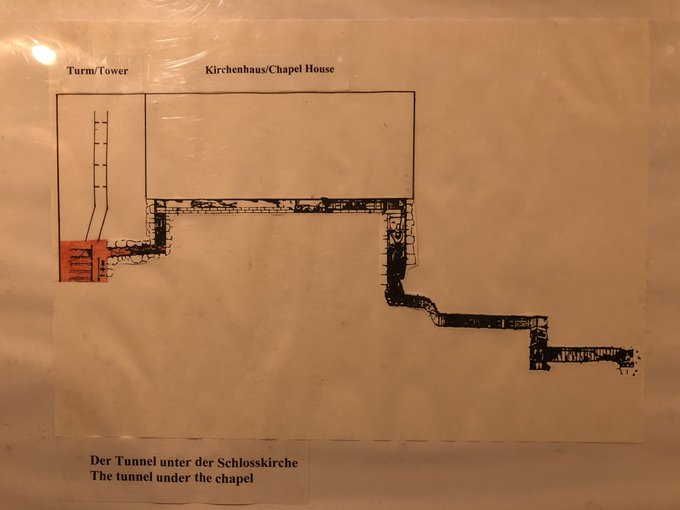
A couple of daring British prisoners successfully escaped by climbing out a window to the castle’s outer courtyard, where the German guards were quartered.

They climbed out the window (right) onto the roof of a building now gone, avoiding the main guard entrance (left). Fellow prisoners practicing music in the middle windows were supposed to keep watch and warn by stopping their song if they saw any guards approaching.

The musical warning didn’t work as planned, but they still were able to make their way across the outer courtyard to the left green door, next to the main gate, which they tried to open using a skeleton key they had made, but couldn’t get it to open.

So they ran to another corner of the courtyard, where they found this door to an underground storage area.
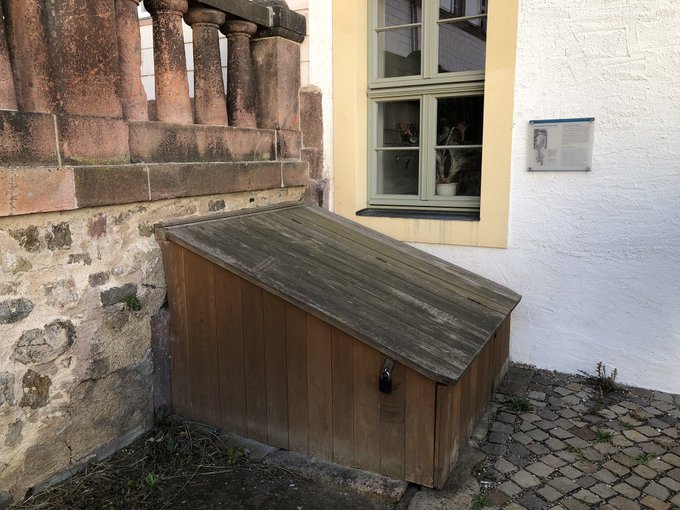
When they opened it, a terrible smell came out, and they didn’t want to enter. But they had no choice, because German guards were approaching.

The smell turned out to be some rotten potatoes – which was fortunate, because it converted their scent from the guard dogs. They were safe for the moment, but trapped.

Eventually, they noticed a tiny gap at the top of the outer wall. By taking off all their clothes, they were narrowly able to squeeze through, to outside the wall of the castle.

They came out on these vine terraces outside the castle wall and, by climbing a few more walls, were able to successfully escape and make their way across Germany to Switzerland.
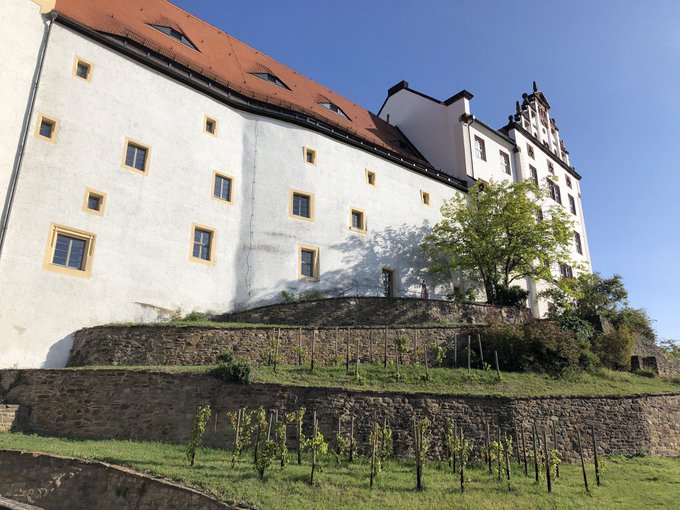
Once several prisoners had escaped, MI6 started sending maps, tools, and other helpful items cleverly hidden in Red Cross packages. The prisoners would hide this contraband in secret spaces below the castle floors, which archeologists continue to find to this day.

Using dyes and other material sent to them, the prisoners secretly made fake German uniforms, complete with insignia, for use in escape attempts. They were good enough to pass notice, at least at night.



Here’s a sewing machine the POWs built, to make disguises.

They made ropes and ladders out of bedsheets.


They even had a radio hidden somewhere in the castle, made from contraband smuggled in to them. I couldn’t help thinking of Hogan’s Heroes.

The prisoners held pageants on stage for entertainment. Under the stage was a way into a passageway along this roof, which led into the main guard tower. Wearing fake German uniforms, they could get into the tower and bluff their way out.

The Germans at Colditz honored the Geneva Convention. When prisoners were caught trying to escape, they were not shot. Usually they were put in a solitary confinement cell like this one, which wasn’t actually that uncomfortable, for a couple weeks. Then they’d try again.
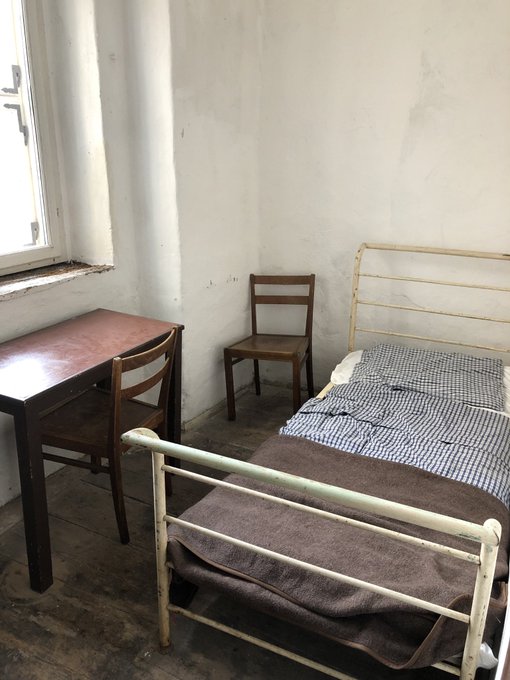
When prisoners were caught, the Germans often photographed them to document the technique they tried to use. This French officer tried to sneak out dressed as a woman. He was foiled when fellow prisoners, who thought he was a lady, rushed to hand back a watch he had dropped.

This prisoner (left) was caught trying to impersonate the local German electrician (right) who came to fix things at the castle. He was nabbed when the guards hailed him in German as he left and he failed to respond.

When prisoners did escape, their comrades made dummies to hold up during roll call so they wouldn’t be missed – at least until they could get far enough away from the castle to have a chance.

But the most ambitious escape plan of all was devised by a British RAF pilot who dreamed of building and flying a glider off the roof of the castle to freedom.

Oddly enough, the prison library had a book on aircraft design that taught him everything he needed to know.
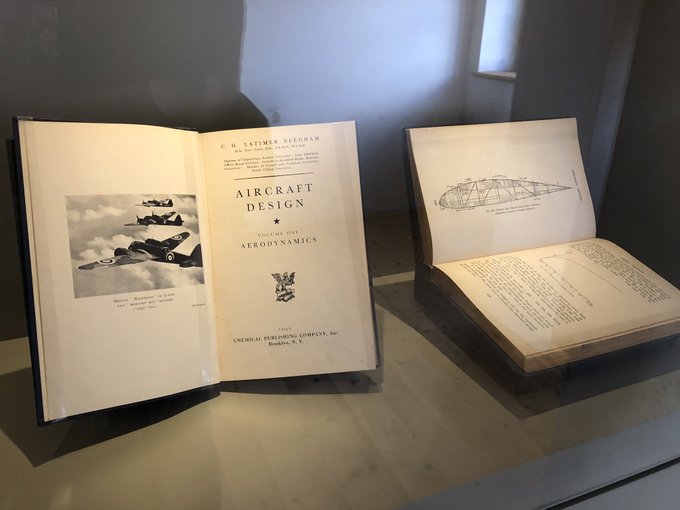
He and his comrades created a fake wall in the attic to hide the glider that they actually built out of wood and fabric.

Colditz was liberated by Allied troops before he had a chance to fly it. The American soldiers who discovered it sitting in the attic were totally flabbergasted.

The German guards at Colditz certainly had their hands full, but they treated it largely as a game of wits. Only one prisoner was shot and killed trying to escape, and that was by accident (they aimed for his arm, but the bullet ricocheted into his heart).




After the war, both sides told their stories, which became the basis for books, movies, and TV shows …

… even a popular board game, which I now want to find and play.

Leave a Reply